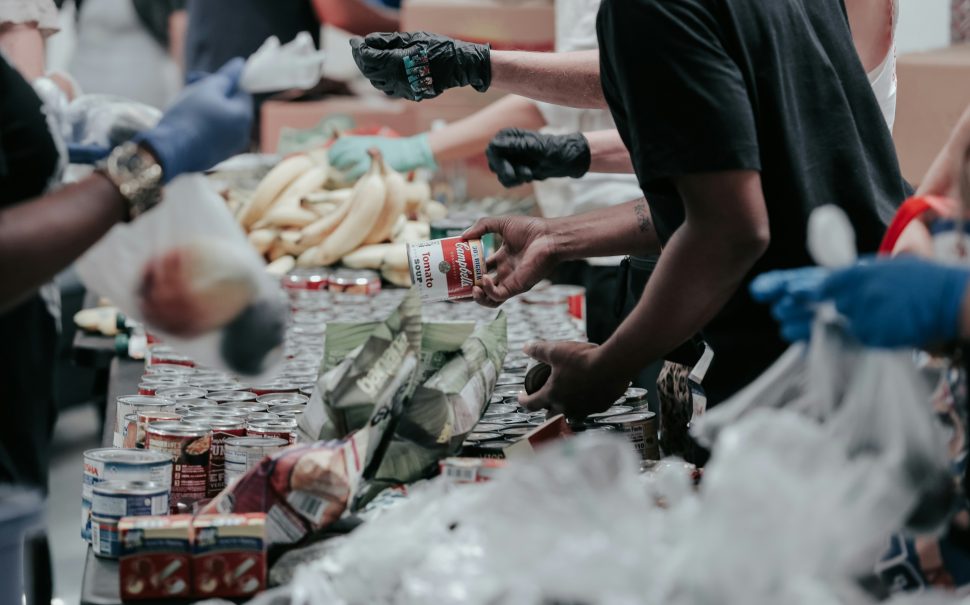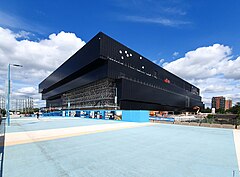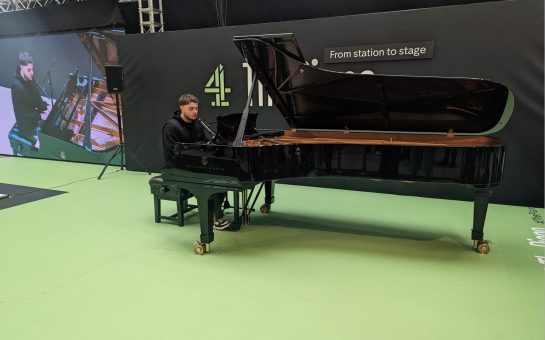Nearly half of children aged 0-15 are in relative poverty in some regions of Greater Manchester, official figures have revealed.
Data released in December 2023 from the House of Commons Library shows Greater Manchester’s relative child poverty rate before housing costs sits six percentage points above the UK national average (20%) in 2021/22, and has risen by 5.7% since 2014/15.
In real terms, this means it’s estimated around 42,000 more children in the region now live in poverty - relatively speaking - than a decade ago.
The relative rate for the region is of such significance because the figure for the rest of the North West lies in-line with the national average rate and is then inflated by two percentage points when the Greater Manchester figures are added to the mix.
However, figures for absolute poverty - another metric commonly used - paint a very different picture, as the graph above shows, with rates actually declining since 2014.
Is there a problem with child poverty in Greater Manchester at all, then? Although the data seems confusing, many experts argue that there is.
The problem in the UK
After the strain caused by the Covid-19 pandemic, the cost of living crisis and the subsequent recession in the UK, families are now left struggling to make ends meet.
In a report released on Friday, the Child of the North campaign claimed child poverty has become the "elephant in the room in Westminster” and warned schools were at the “frontline of the battle against child poverty”.
Campaigners, volunteers and researchers up and down the country have been calling for significant action from the government to reduce child poverty, but while relative figures continue to show a rise in rates for Greater Manchester, recognition of child poverty as a serious issue is an ongoing battle.
Rachel Walters, the coalition coordinator for End Child Poverty, said: “When you talk to MPs from constituencies that are not metropolitan, or where they aren’t necessarily super engaged with the local community or the food bank, it's very easy for them to say, what are you talking about? Child poverty isn't a problem.
“There aren't children living on the streets, but it's because of all these agencies and schools and public bodies that are sort of propping up the poorest in society.”
An organisation in focus
One such organisation propping up people who are struggling is Food Cycle, a community dining organisation making use of empty community centres and village halls to offer free meals to anyone in need.
Tackling poverty and loneliness over the past 10 years, they have seen a 57% increase in people accessing their services across their 86 centres nationwide, currently helping 3000 people a week.
They have 10 centres in just the North West, while serving between 30 and 50 people per project each week, an estimated 2,500 meals so far this year.
Sophie Tebbetts, the company’s CEO, said: “There's a direct correlation for children who are actually in poverty or food poverty, to also then be socially excluded from society. We are a wealthy country, I don't think anyone can look at those stats and think this is what it should be like in the UK today.
“Children in the UK are three centimetres shorter than our European counterparts because of poor nutrition. It is having a real effect on how our children are developing and growing.”
In an effort to address child poverty issues in schools as detailed in the recently released Child of the North report, Food Cycle is set to launch its first new schools pilot in May, assisting parents with meals and generating community support networks.
Tebbetts added: “There have been a lot of conversations we've had in schools. They're desperate for services for their families and their children, because they really are the hub of that community.
“There is no stigma in getting help and doing that because often you are a victim of circumstance. There is no judgement on trying to get extra support for you and your family.”
Regional differences across the UK
The reliance on social services, food banks and schools presents a dire picture for child poverty in the UK and this can be seen through the House of Commons library statistics.
When looking at the average rates for the regions of the UK, significant disparities arise, with some falling well below the UK average, notably in the east of England, meanwhile regions like the Midlands and those in the North tell a very different story.
Levelling up has been high on the government agenda as of late, but while HS2 has been at the centre of this debate alongside other high-cost infrastructure projects, social issues seem to have fallen down the priority order.
Walters said: “When the government produced their levelling up white paper, there wasn't a single mention of child poverty in that at all.
"To have children completely missing from that debate shows that there was never going to be anything put in place that would have levelled up the country in terms of reducing poverty.
"It was much more about creating infrastructure change that will not benefit families and is definitely not going to be benefiting children.”
A breakdown of child poverty measurements
Fuelling the different attitudes to the seriousness of child poverty are the numerous ways of measuring the issue. For example, the House of Commons Library figures distinguish between absolute and relative poverty.
The former relates to when a household’s income is below 60% of the median in a base year, usually 2010/11, and adjusted to inflation; while relative poverty varies according to those in a household below 60% of the median only, where current salary levels are analysed against others in the country.
Both figures deserve respect, but they show very different outlooks for the rate of children in poverty, often used in very misleading ways.
Walters said: “You often hear the government say, ‘well actually we've lifted people out of poverty’, and they quote an absolute figure for poverty.
"The problem with using absolute figures is that they're comparing the situation people are in now with this time in the past.
“Absolute figures aren't quite showing what it is that the government is saying overall for the country. By any measure of child poverty, we're still doing badly.”
As a result, the figures for the UK show very different trends - as the first graph shows.
For the UK the relative rate is 20%, while Greater Manchester sits six percentage points above that figure. And while the absolute rate for the UK is 15%, Manchester sits at 18%. In 2021/22, Parliament’s most recent figures, an estimated 158,670 children were classified to be in relative poverty and 112,821 children in absolute poverty for the region.
Greater Manchester in focus
But while the national picture certainly appears bleak, with very obvious disparities, these disparities also appear within Greater Manchester.
According to the relative figures, which are considered to be the most accurate, 21 of the 27 constituencies in the region are above the UK average.
And while four constituencies have rates that are double the UK average, six constituencies fall below the UK rate, with three featuring less than 2000 children meeting the metric.
Since 2014-15, the relative figures for the area can also be seen to have risen significantly by 5.7 percentage points - approximately 42,614 children.
And yet absolute figures claim an entirely different trend, suggesting that the region has almost two percentage points less child poverty than seven years ago, a decline of 2,545 children. In the context of the Covid-19 pandemic, the cost of living crisis and the UK’s current recession, these figures portray a misleading reflection of the current situation people are in.
Case study: The two-child limit to benefit payments
Another factor in the increase in relative figures could well be a change to the benefit system introduced in 2017.
The two-child limit applies to families on universal credit or any older legacy benefit scheme, whereby benefits are paid out to families with two children, but any third child or beyond - born after April 2017 - will not receive benefits.
The Resolution Foundation earlier this year found while 34% of children in larger families were in poverty during 2013-14 the figure is expected to rise to 51% in 2028-29, while the proportion of two-child families in poverty is expected to remain constant over the same 15-year period.
End Child Poverty is one of the main organisations campaigning to scrap the policy, with current estimates from the Resolution Foundation claiming that if the limit was scrapped then 490,000 children would be lifted out of poverty across the UK.
Walters said: “Families who thought that they could support three or four children have gone through COVID and an economic crash.
“And then if you go and try and claim benefits, you suddenly realise that the benefits are not going to cover all of your children, through no fault of your own.”
Blackley and Broughton, one of the Greater Manchester constituencies which fares worse for child poverty, also tops End Child Poverty’s list for highest percentage of children living in the area in a family affected by the two-child limit.
With almost 50% of children in the constituency living in poverty, this is perhaps an example of government policy correlating with rising levels of poverty among children instead of reducing levels.
While organisations like End Child Poverty campaign for real change and Food Cycle tackle the issue on the front line, they say it's easy for the seriousness of the problem to be brushed under the carpet.
But for people in Greater Manchester, the day-to-day struggle can make it incredibly difficult to get by.
Featured image: Joel Muniz - Unsplash




